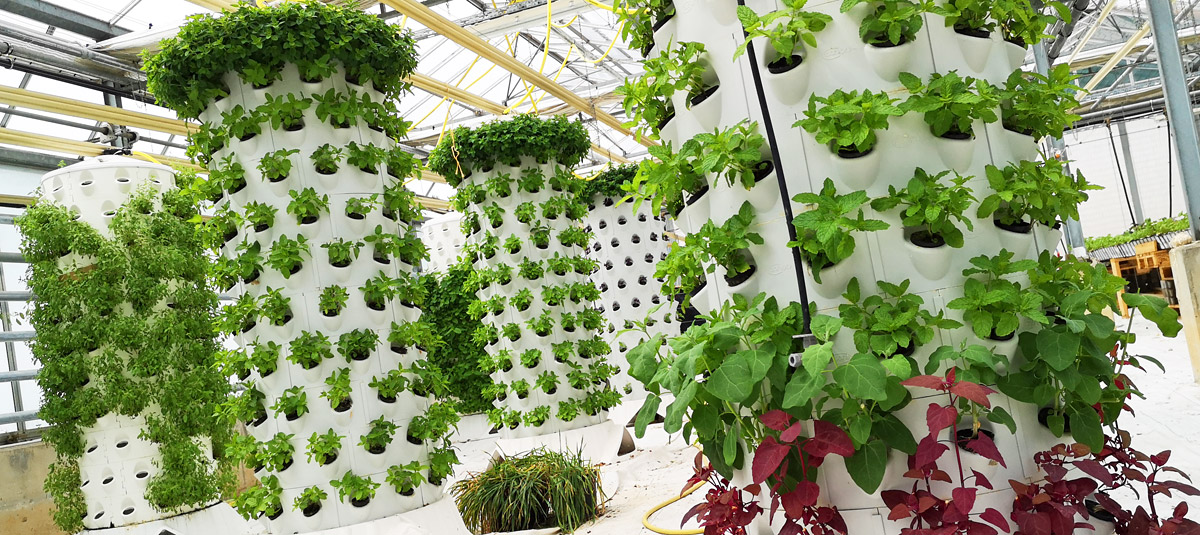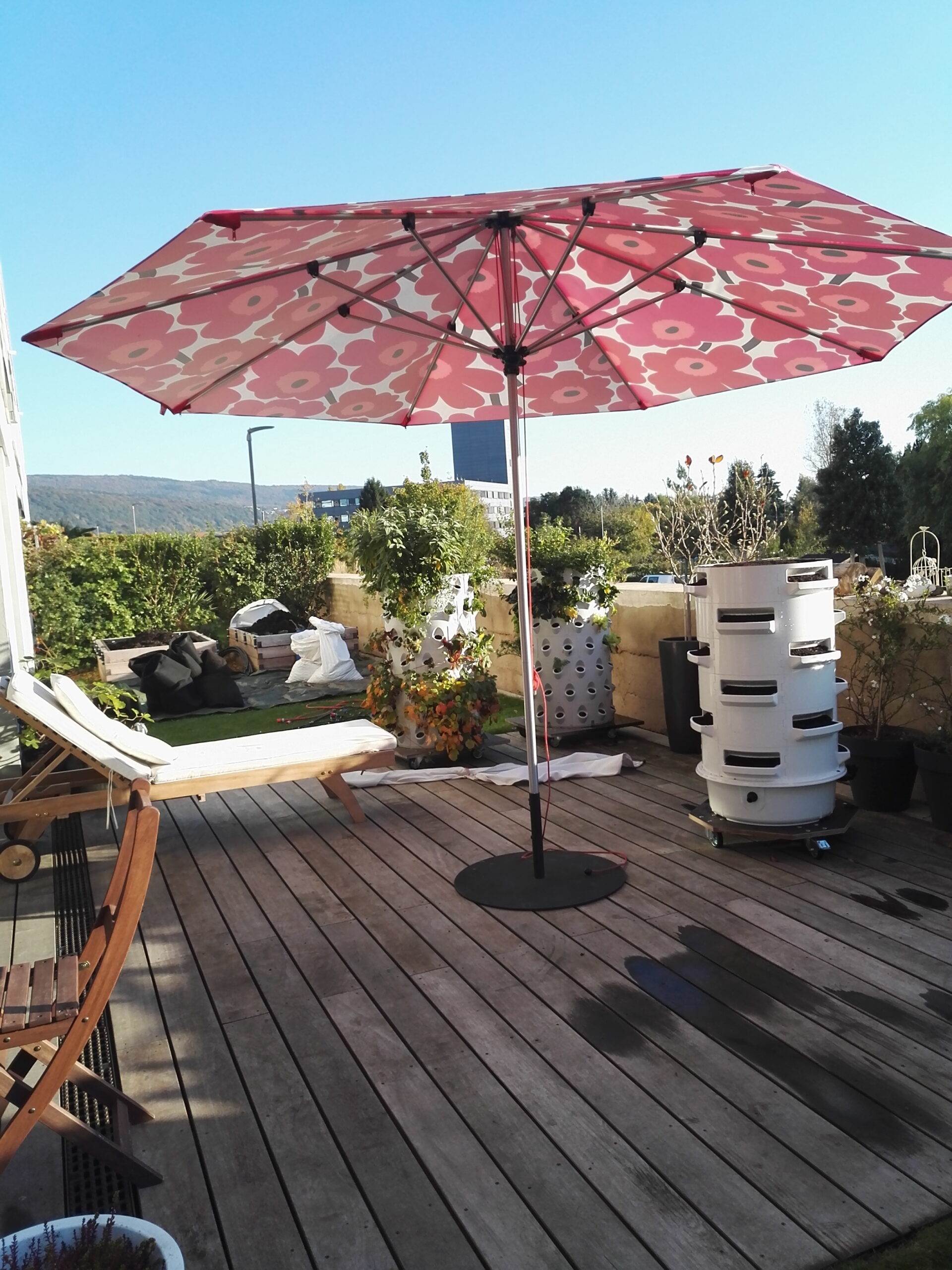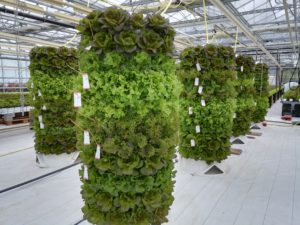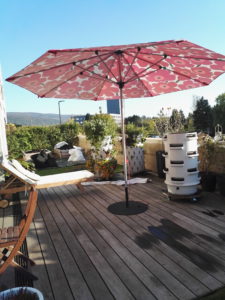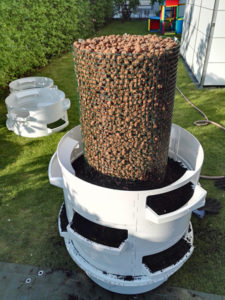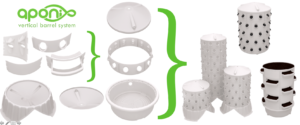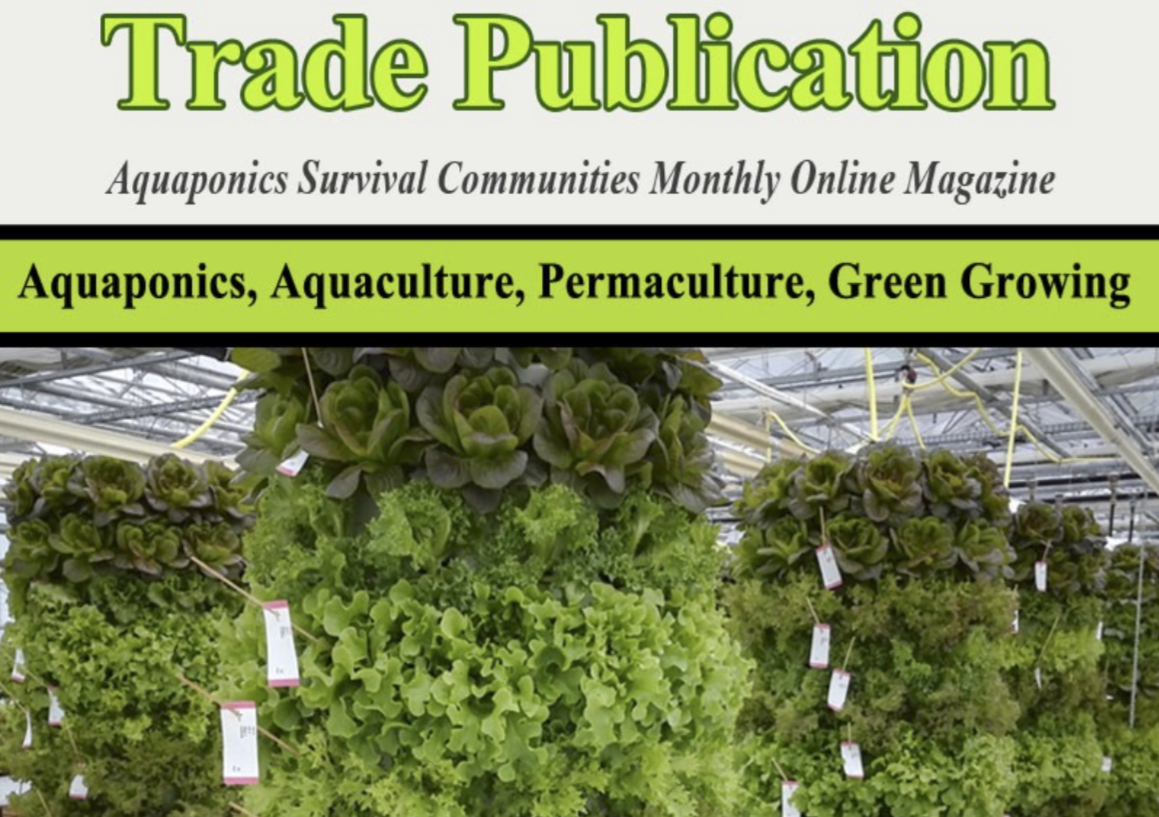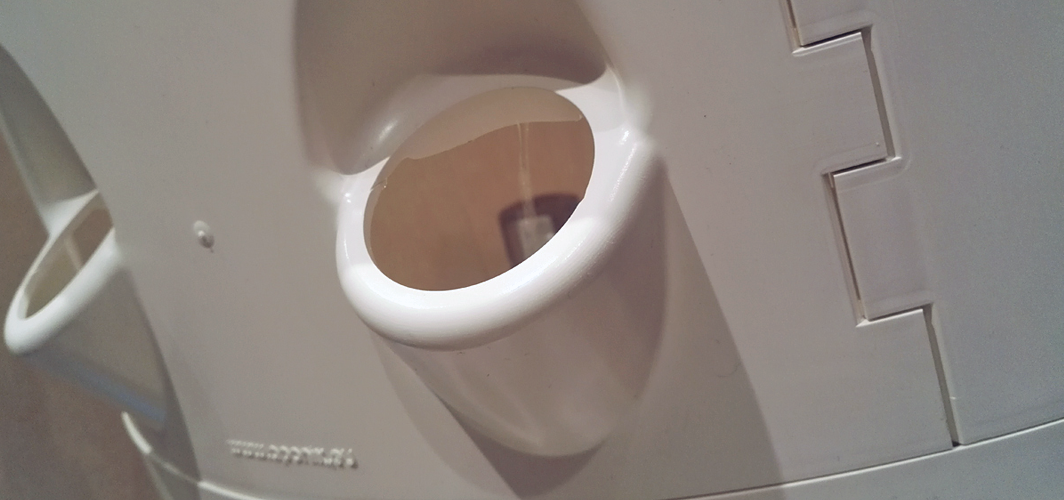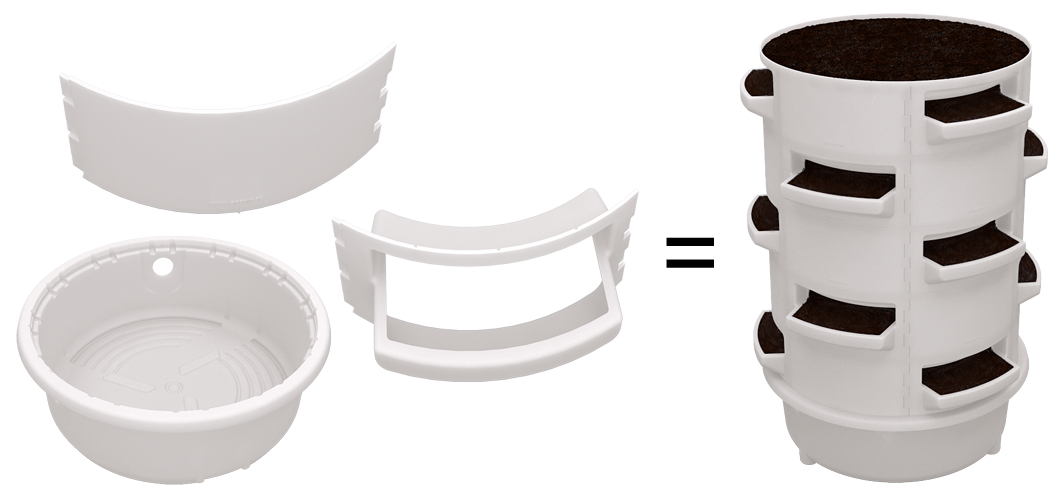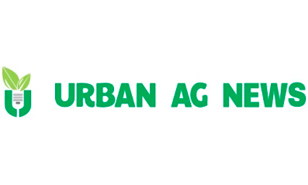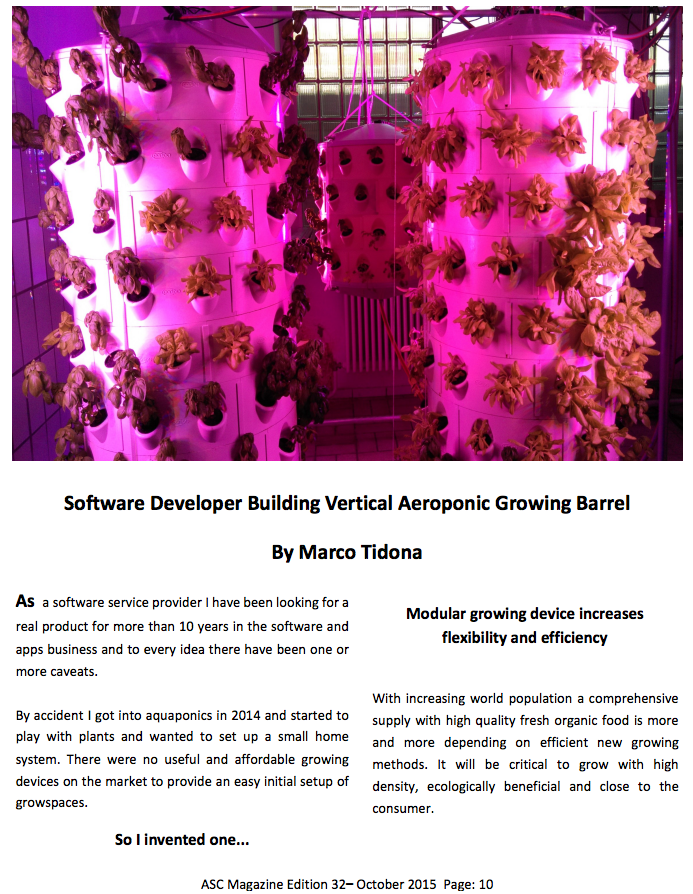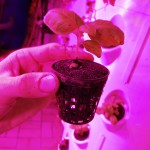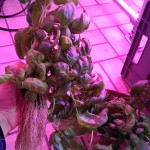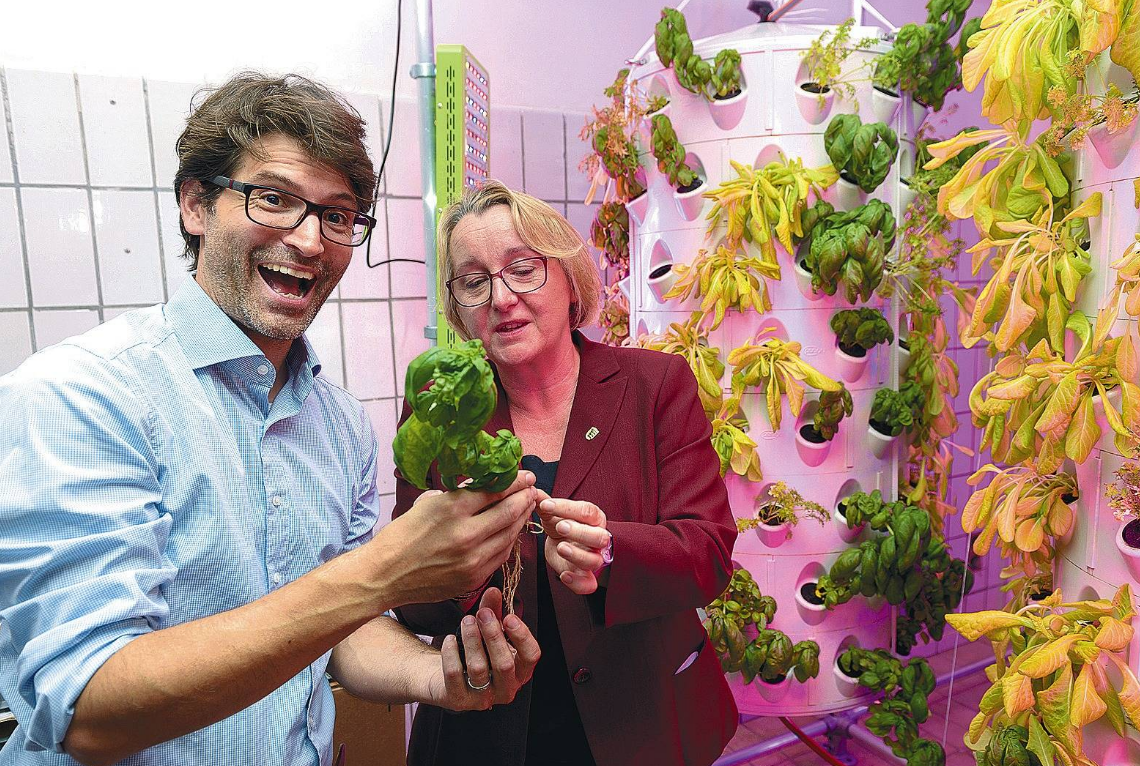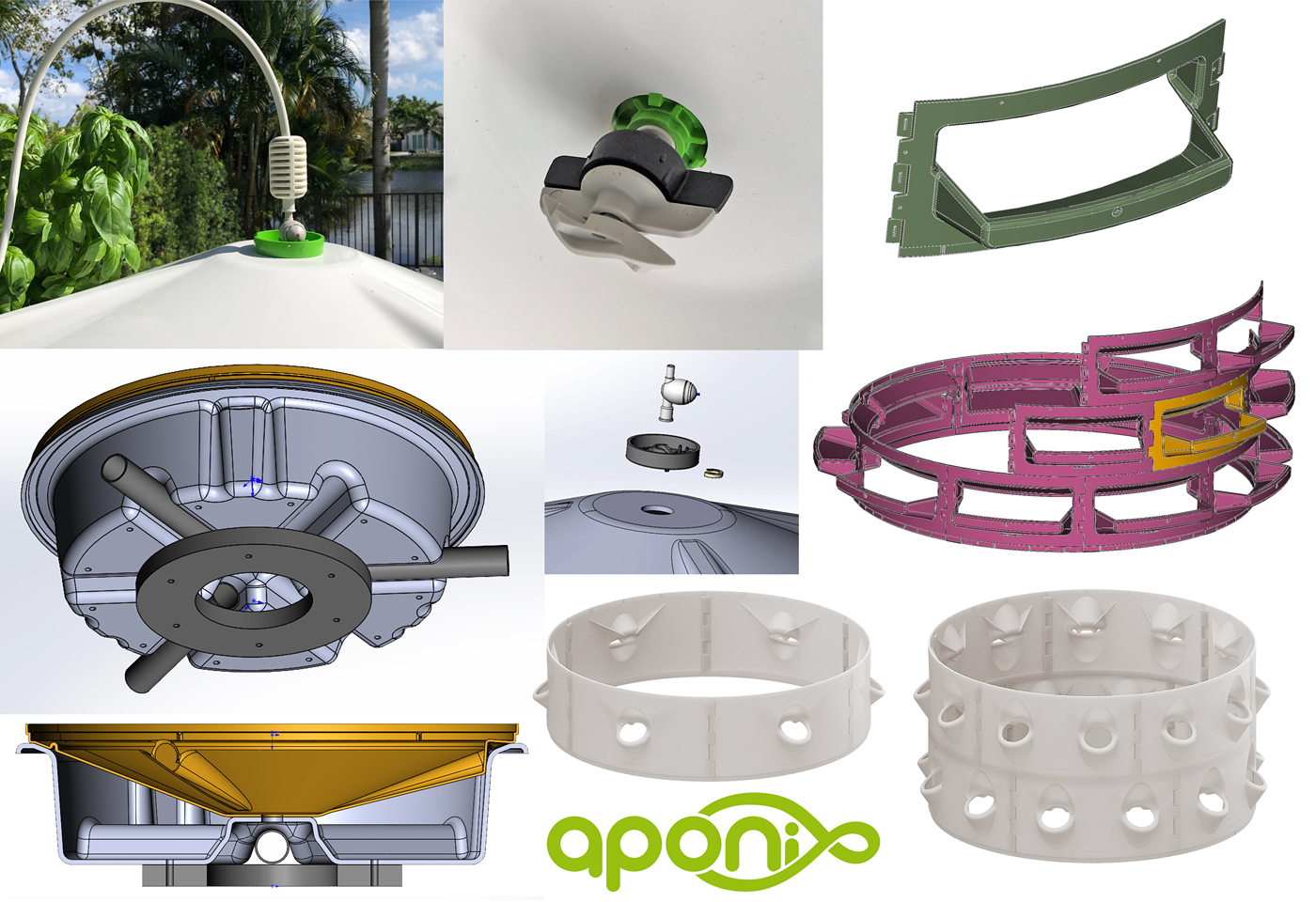
(…)
Aponix’ mission is to facilitate the setup of high density grow spaces for soil-less cultivation by taking the existing 2D NFT concept to the 3rd dimension in a very flexible, simple and also robust way. It is especially designed for urban farming facilities operating on limited space. The range of available pieces with different functions has been extended continually during the last 2 years of development. In the meantime many new users started testing or are actively using vertical barrels worldwide in a wide variety of applications.
As of 2020 aponix changed their market strategy from looking for distributors to working more extensively with product partners who bring in own engineering and create more specific and distinguishable products from their barrel components. This is based on the definition of the aponix components as being mere infrastructure parts that always need to be integrated into a greater individual context. Product partners are required to create their own unique solutions based on aponix pieces adding other external even competitive pieces and/or service and market them independently under their own brand and own product name. As result of this co-operative type of relation some new interesting components have been designed that in turn can be used by other existing product partners too. One nice example is the new lid-base that can be used to put a unit on a rotation table or stationary with a standard 40mm PVC pipe to drain the liquid underneath. That way aponix managed to move the focus from unproductive competition on just commodity pieces and open the door for all sorts of bad copies to the best possible solutions and product creation for the product partners. For more details please visit http://www.aponix.eu/product-partners.
(…)

